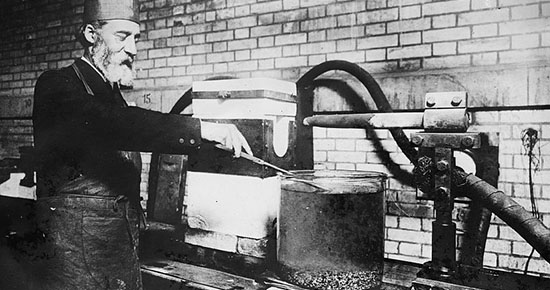Who Invented Laboratory Diamonds?
- These are the three main categorizes of synthetic diamonds.
- Large 2.1 carrots plus will likely have certifications.
- Commercial .250 to 2.00 carrots in size.
- Melee under a .250 carrots in size.
- (HPHT) High Pressure High Temperature.
- HPHT Colorless = seed plates grow in two directions cube and octahedral at high temp high pressure.
- An octahedron just means that the object has 8 faces 12 edges and 6 vertices though it is noted and shared here in a regular octahedron it is composed of 8 equilateral triangles 4 that meet at each vertex known best as ta high point or top peak.
- Uneven color distribution
- Graining patterns
- Unusual florescence colors
- Florescence color patterns
- Occasional phosphorescence
- Metallic flux inclusions
- No strain patterns
- Possible inscription on girdle
- (CVD) Chemical Vapor Deposition
- CVD Colorless = seed plates grow upwards high temperatures at low pressure using carbon gas
- CVD visual comparison features:
- Even color distribution
- No graining patterns
- Unusual fluorescence colors
- Fluorescence color patterns
- Occasional phosphorescence
- Occasional dark pinpoint inclusions
- Banded strain patterns
- Possible inscription on gridle

Who Invented Laboratory Diamonds?
First produced in 1879 by James Ballantyne Hannay. Second produced in 1893 by Ferdinand Frederic Henri Moissan.
Both of these experiments involved the use of a crucible iron charcoal cold water and very high 3500 Celsius or 6332 Fahrenheit in a furnace while the other used by metal foundry's still in use electric arc furnace, and carbon rods within a flame-heated tube and through immersion in water.
The Swiss, Americans and Russians each worked on CVD and HPHT technology processes and procedures to seek a breakthrough in the ability of growing a diamond crystal seed in a repeatable thus usable format, so beginning in the 1940’s with reproducible synthesis reported in 1955 the process and repeatability were in fact achieved.
To this day these two CVD and HPHT laboratory diamond growing methods are the ones in use currently. We share that there are two additional though not in production or use as of yet. These methods are said to be coming along as well, detonation synthesis and graphite high-power ultrasonic are there names and vague types, showing that this laboratory diamonds industry is a very liquid industry with both consumer and commercial diamond grown stones in demand.
The synthetic diamond discussion began in 1971
The first gem-quality diamond crystals were first produced by the General Electric Company in 1970 and shared publicly in 1971 when a pyrophyllite tube seeded at each end of a thin piece of a natural diamond, this involved graphite feed material placed in a the enter of a metal solvent nickel.
What are and How HPHT Laboratory Diamonds Occur
HPHT visual comparison features
What are and How CVD Laboratory Diamonds Occur
